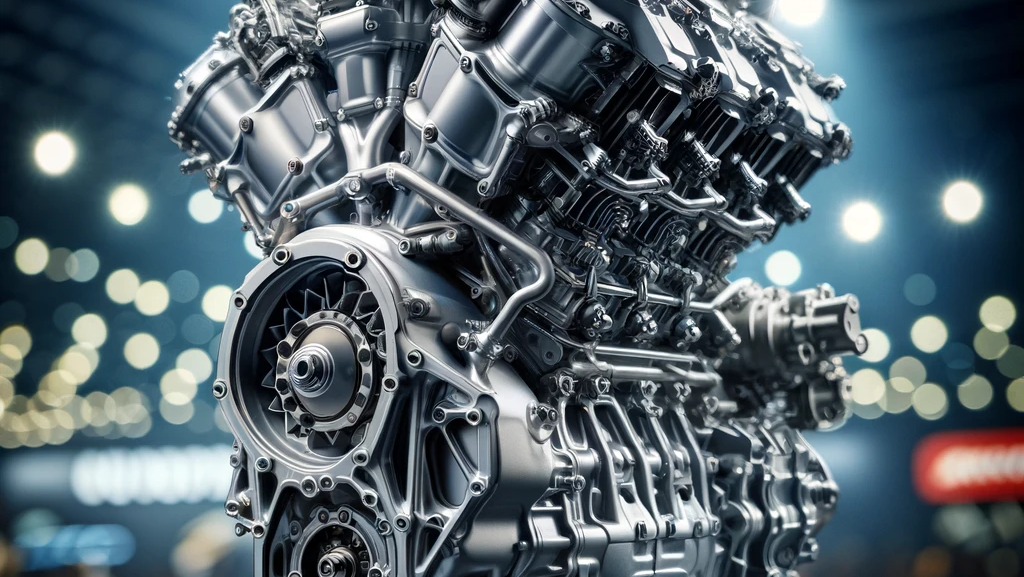Ducati’s V-t twin engine has long been a symbol of power, precision, and innovation in the motorcycle world. From its inception to its current status as a benchmark in engineering, this engine’s journey is nothing short of legendary. Let’s explore the milestones and technological advancements that have cemented the V-twin as a cornerstone of Ducati’s legacy.
The Birth of an Icon
Early Beginnings: The 1970s
The story of Ducati’s V-twin engine begins in the early 1970s with the introduction of the Ducati 750 GT. Designed by the legendary Fabio Taglioni, this bike marked Ducati’s first venture into V-twin territory. The 750 GT featured a 90-degree V-twin engine, a configuration that would become synonymous with Ducati. The 90-degree layout offered perfect primary balance, which significantly reduced vibrations—a critical factor for performance and rider comfort.
The Desmodromic Valve System
One of the key innovations that set Ducati’s V-twin apart was the Desmodromic valve system. Unlike conventional valve springs, the Desmodromic system uses a unique cam mechanism to both open and close the valves. This design ensures precise timing and eliminates valve float, allowing for higher RPMs and improved engine reliability. The system, first used in Ducati’s single-cylinder engines, was seamlessly adapted to their V-twin engines, enhancing performance and efficiency.
Evolution Through the Decades
The 1980s: Dominance in Racing
The 1980s saw Ducati’s V-twin engines dominate the racing scene. The Ducati 851, introduced in 1987, featured an 851cc liquid-cooled, four-valve, fuel-injected V-twin engine. This bike marked the beginning of Ducati’s Superbike legacy. With its advanced technology and superior performance, the Ducati 851 set new standards in motorcycle racing and laid the groundwork for future models.
The 1990s: The Birth of the Monster
In the 1990s, Ducati continued to innovate with the introduction of the Monster series. The Monster 900, launched in 1993, featured an air-cooled, two-valve V-twin engine. This bike combined the raw power of Ducati’s engines with a minimalist, naked bike design, appealing to a new generation of riders. The Monster series became a huge commercial success and solidified Ducati’s reputation for blending performance with style.
The 2000s: Technological Advancements
The turn of the millennium brought significant technological advancements to Ducati’s V-twin engines. The Testastretta engine, introduced in 2001, featured a more compact design, reducing the angle of the valves for improved combustion efficiency. This engine powered the Ducati 996R and later the 999, which won multiple World Superbike Championships. The Testastretta engine’s innovations underscored Ducati’s commitment to pushing the boundaries of performance.
Modern Marvels: The Panigale Era
The 2010s: Superquadro and Beyond
In 2012, Ducati unveiled the 1199 Panigale, featuring the revolutionary Superquadro engine. This new V-twin engine had an extremely oversquare bore and stroke ratio, which allowed for unprecedented RPMs and power output. The Superquadro engine represented a significant leap in V-twin technology, boasting impressive power figures and a lightweight design. The Panigale series, powered by the Superquadro engine, set new benchmarks for superbike performance and design.
Today’s V-twin: The Ducati V4 Shift
While Ducati has embraced the V4 engine configuration with models like the Panigale V4, the legacy of the V-twin continues to influence their design and engineering philosophy. The V4 engines retain the 90-degree layout and many technological innovations pioneered by their V-twin predecessors. Ducati’s current lineup showcases the brand’s ability to blend tradition with cutting-edge technology.
The Cultural Impact of Ducati’s V-twin
Ducati’s V-twin engines have not only set performance standards but have also left an indelible mark on motorcycle culture. The distinctive sound of a Ducati V-twin is instantly recognizable and evokes a sense of passion and performance. Ducati’s commitment to excellence has cultivated a dedicated fan base and a rich racing heritage. The V-twin engines have become an icon of Italian engineering, representing a blend of artistry and performance that few brands can match.

